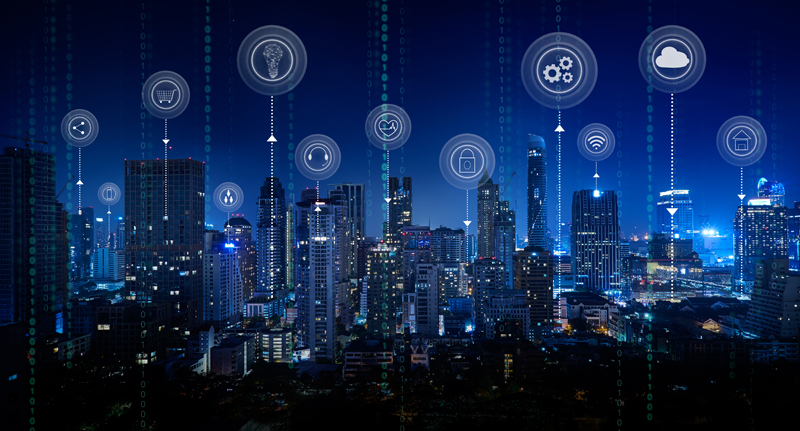5G: The potential of smart cities to transform public services

5G: The potential of smart cities to transform public services
While drawing parallels between 5G and national security and Theresa May's decision-making, Iain Searman discusses the use of 5G networks to support smart cities.
On our increasingly urbanized planet, technology is changing the lives of millions of people a begin to smart cities reality. It is predicted that nearly 70% of the world's population will live in these cities in the next 30 years; this rapidly growing new urban population will demand housing, employment, healthcare, infrastructure and services. Hailed as a game-changer,
5G will make smart cities a reality, enabling greater automation and seamless connectivity, and unlocking the potential of emerging technologies to transform public services and economies.

What can 5G do for a city?
5G promises to be 30 times faster than current network infrastructure and will allow for seemingly instant two-way data transfer. This will unlock the potential of the Internet of Things in smart city environments, connecting more and more smart devices to improve public services, including electric vehicle charging stations and public transport to reduce congestion and be able to cope with increasing demand.
For example, households in some European cities now store waste in municipal smart bins that monitor waste levels and optimize collection routes, making local authorities more efficient at delivering waste collection services and better meeting consumer demand.
More efficient vehicular movement will be an important factor in reducing congestion while enabling people to move freely in the cities of the future. With the number of workers moving in and out of cities every day, transportation infrastructure is under increasing pressure to move people quickly and safely.
Connected autonomous vehicles (CAVs), capable of making decisions faster than humans, are already being introduced on our roads with the aim of reducing human error.
Additionally, a connected fleet of fleets could improve the reliability of public service operators using our roads, from emergency services to buses to waste collection trucks; future vehicles will be able to react proactively rather than reactively, transmitting data to Predict maintenance and prevent unplanned downtime.
How does 5G work with IoT?
The speed of 5G will have the biggest impact on how we interact with technology for services.
The low latency and high reliability of new 5G networks means, for example, that many aspects of healthcare can be communicated seamlessly through the technology, translating into a remote consultation experience for patients and healthcare professionals, saving healthcare professionals time, resources and funds.
The advent of wearable technology in the new connected IoT environment opens up the possibility for patients to use sensors to transmit data to help study medical conditions, as well as keep healthcare practitioners informed about the status of individual patients.
IoT represents a major shift towards more effective use of data to manage assets, resources and services of all public services and increase efficiency. Its potential will be welcomed by public sector organizations, which are under constant pressure to do more with less.
How are spending cuts in the UK?
At a time when public service spending has never been under such scrutiny, 5G will enable organizations such as the police, NHS and government to use new technology to improve efficiency, productivity and save money in the long run, helping to automate processes that would otherwise take up Lots of budget and time.
For example, it is possible to make health records easier and more secure for professionals and patients to access, thereby reducing the risk of security breaches.
The rollout of 5G will allow rapid technology updates and improved security measures, which will help keep important confidential information safe.
But while the promise of 5G is almost within reach, achieving it will certainly not be easy, and security is one of the first red flags flying in the UK right now. Hardware security concerns have hindered the rollout of the country's 5G network, which will rely on a robust, future-proof network infrastructure. Limited budgets and the need for skilled IT teams to manage the transition to new technologies can also slow down an organization's change process.
The challenge for the public sector will be to transition from traditional legacy systems, cultures and ways of working so that they can maximize the potential of 5G and take full advantage of the smart, new, connected world of tomorrow.